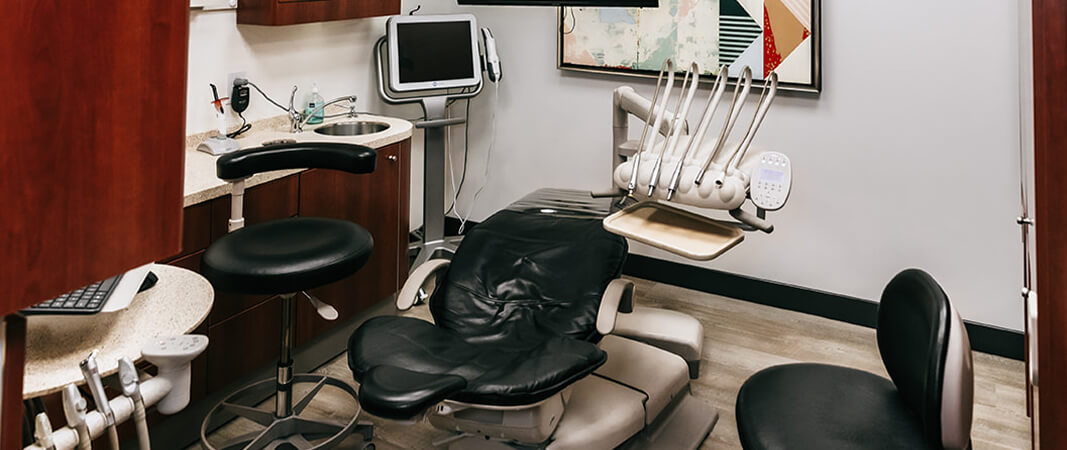Gum disease is a common oral health issue, which is why preventative care is a key focus of dentistry services. Gum disease starts when plaque, a sticky film of bacteria, builds up on teeth and hardens, leading to irritation of the gums. If unaddressed, it can eventually affect the bone that supports your teeth.
The good news is that you can take steps to protect your family’s oral health. You can reverse the earliest stage of gum disease, known as gingivitis, but more advanced stages require management to prevent further damage. Understanding the signs and knowing when to seek professional dental advice can make a significant difference to your well-being.
How to Spot Early Signs of Gum Disease
The first step is to know what to look for. When you catch gum disease in its early phase, you have a much better opportunity to stop its progression. In particular, pay close attention to any changes in the appearance or feel of your gums.
Telltale Signs of Gingivitis
Gingivitis is the mildest form of gum disease, and its signs are often subtle. You might notice some of these changes in yourself or a family member.
- Gums that look red or swollen
- Gums that feel tender to the touch
- Bleeding when you brush or floss
- Persistent bad breath that doesn’t go away
Your Role in Prevention & Home Care
Good daily habits are your family’s first line of defence against gum problems. A consistent routine helps remove plaque before it can harden into tartar and cause irritation. This daily care is the foundation of a healthy smile.
Build a Strong Oral Hygiene Routine
A few simple steps each day, including following guidelines for proper brushing and flossing, can help keep your gums healthy. It’s all about being thorough and consistent with your cleaning habits.
- Brush your teeth at least two times a day with a soft-bristled toothbrush.
- Floss once a day to clean between your teeth where a toothbrush can’t reach.
- Consider an antiseptic mouth rinse to help reduce bacteria in your mouth.
Electric vs. Manual Toothbrushes
While both electric and manual toothbrushes can be effective, the most important factor is your technique. An electric toothbrush can make it easier to remove plaque effectively, however, what matters is that you clean all your tooth surfaces thoroughly every day.
Professional Help for Gingivitis
Sometimes, home care isn’t enough to remove all the hardened plaque, or tartar. When this happens, professional dental treatments can help get your gum health back on track. For early-stage gum disease, the solution is often straightforward.
Professional Cleaning
For gingivitis, a thorough professional cleaning is often all that’s needed. Your dental hygienist uses special tools to remove the plaque and tartar buildup above and below the gumline. This allows your gums to heal and reattach to your teeth properly.
Treatments for Advanced Gum Disease
Once gum disease progresses beyond gingivitis, it’s called periodontitis. At this stage, the infection has started to affect the bone supporting your teeth. While you can’t reverse periodontitis, you can manage it with professional treatment.

Scaling & Root Planing
This procedure, often called a dental deep cleaning, is for moderate gum disease. It involves carefully removing tartar and bacteria from your tooth surfaces and from beneath your gums. It also smooths the tooth roots to help prevent future bacteria from attaching and allows the gums to heal.
Surgical Options for Serious Cases
If gum disease is more advanced, other procedures may be recommended. These treatments help repair the damage to the gums and the bone that supports your teeth. Your dentist can explain which options might be suitable for your situation.
- Pocket Reduction: This procedure helps clean tartar from deep pockets that have formed around teeth and makes it easier for you to keep the area clean at home.
- Bone & Gum Grafts: These treatments use material to help your body regenerate lost bone or gum tissue, providing better support for your teeth.
Long-Term Gum Health & Management
Even if you have a more advanced stage of gum disease, it’s still manageable. With the right care plan, you can stop it from getting worse. This helps you maintain a healthy mouth for life.
The Importance of Regular Dental Visits
Ongoing care is key to managing gum disease. Regular checkups allow your dentist to monitor your gum health and provide cleanings that keep bacteria under control. These visits are an important part of your long-term health plan.
At Pinnacle Dental, we believe that preventative care and early action are the best tools for maintaining healthy gums. From daily brushing and flossing to professional cleanings, every step contributes to a lifetime of good oral health. If you have concerns about your gums or want to schedule a checkup, contact us today.



